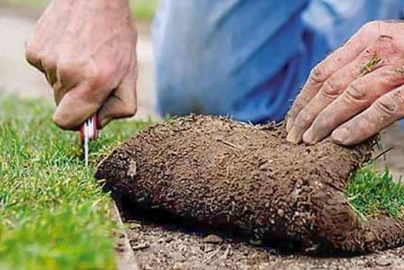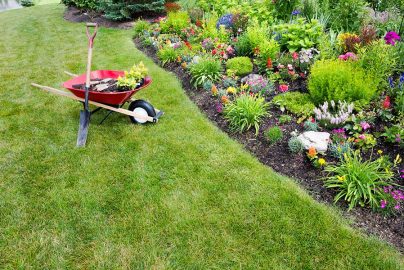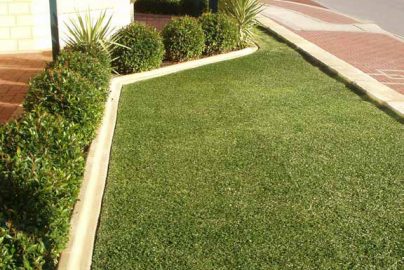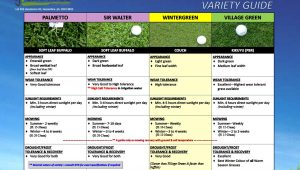"5 Steps To Choosing The Right Lawn For You"
Are you looking for a lush new lawn? You may have recently built your home or renovated your landscape. Perhaps you’re replacing the existing lawn on your business’s site. Whatever your situation, you should remember that not all grasses are the same.
It’s important to choose the right turf, otherwise you may find yourself needing to replace it in a few years’ time. The type of turf that’s best for you will depend on things like your budget, your lifestyle or business needs, and the local climate.
-
1 Availability of sunlight
Try to assess how much sunlight is available in the area, as some turf varieties require more sunlight than others. Does your lawn receive full sun throughout the day, or are there trees, fences and buildings blocking the sunlight?
If you are facing extensive shade, you may consider a more shade tolerant type of turf. For example, the Sir Walter and Palmetto Buffalo varieties are extremely shade tolerant, able to maintain their colour and cover without extensive amounts of sunlight.
Sunlight Requirements by Variety
- Palmetto Soft leaf Buffalo – 3 Hours direct sunlight
- Sir Walter Soft leaf Buffalo – 3-4 Hours direct sunlight
- Village Green Premium kikuyu- 4 Hours direct sunlight
- Wintergreen Couch – 4-5 Hours direct sunlight

-
2 Durability
Consider how the lawn will be used, and what type of traffic it will need to accommodate.
Will the turf be exposed to pets, children, cricket games or golfers? Or will it simply be ornamental?
You should choose a type of turf that will be able to tolerate adequate levels of foot traffic, and also recover from excessive wear.
Varieties such as Village Green and Wintergreen Couch are more hard-wearing than others, making them perfect for use as sports turf or for residential lawns.
Wear tolerance by variety
- Palmetto Soft leaf Buffalo – Moderate wear tolerance
- Sir Walter Soft leaf Buffalo – High wear tolerance
- Village Green Premium kikuyu- High wear tolerance
- Wintergreen Couch – High wear tolerance

-
3 Soil type and location
Before you decide on turf, check your soil. Is it poor and compacted? Are there drainage issues that need to be fixed?
For best results, new turf should be laid on a 150mm thick layer of good quality sandy loam. Where you live will determine the PH level of the soil (alkalinity or acidity), so the turf variety you choose and treatments you apply need to take this into account.
If you’re unable to remove the existing soil, consider adding organic material, pre start fertilizers, chicken manure or river sand to improve your soil before you lay new turf. When setting finished soil levels, allow 25mm to 30mm for thickness of rolls (depending on variety) when butting up against footpath or driveway.
Key factors
- Is your soil poor and compacted?
- Are there drainage issues?

-
4 Waterwise and drought tolerance
A few things to take into consideration.
Will your water be sourced from a bore or mains? If using a bore, you can apply water 3 days a week to established lawns whereas scheme water is only permitted to be applied twice a week.
Turf such as Sir Walter has a very high tolerance to salt.
Once established, some turf varieties such as Sir Walter may cope better than others with drought.
There can be 40%-60% water usage difference between cool season and warm season turf varieties. Cool season requires much more water.
Waterwise turf by variety
- Palmetto Soft leaf Buffalo – warm season variety
- Sir Walter Soft leaf Buffalo – warm season variety
- Village Green Premium kikuyu – warm season variety
- Wintergreen Couch – warm season variety
New lawns need regular watering so ensure the water corporation has been notified of the installation.
Also think about how you’ll irrigate your lawn
- Automatic pop-up sprinkler system is the most effective.
- Avoid sub surface irrigation for lawns, it is costly, hard to fault find and less effective.
- Use catch cups to calculate how long you need to run irrigation to apply the correct amount of water per watering session.
- If your property is coastal there are sprinklers designed to cope with windy conditions.

-
5 Cost
The type of turf that’s right for you will depend on your budget.
There is the upfront cost of purchasing and installing the turf,.
Buffalo grass varieties may require more initial investment than Couch varieties, but they’re significantly cheaper to maintain in the long run. Consider how much you’re willing to pay now, as opposed to what costs you’re prepared to pay in the future.
Key factors
- Consider your budget
- Factor in ongoing maintenance costs


